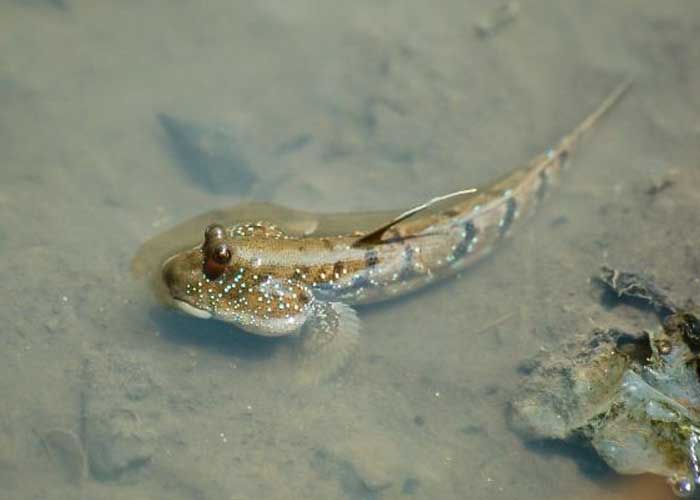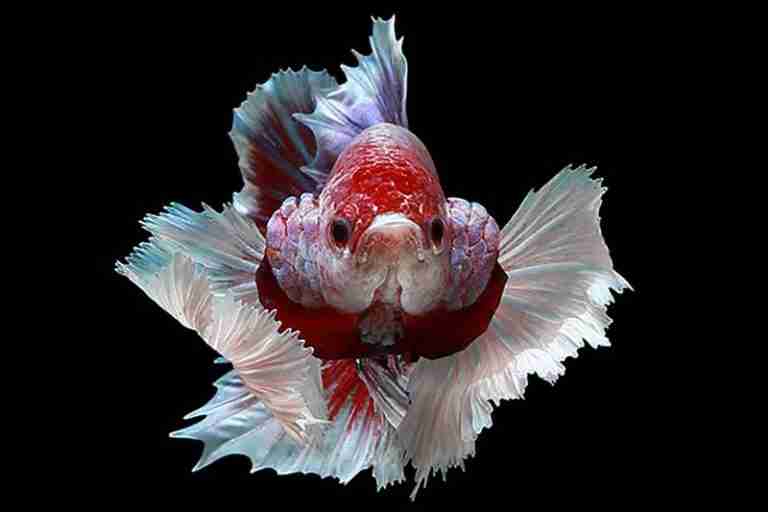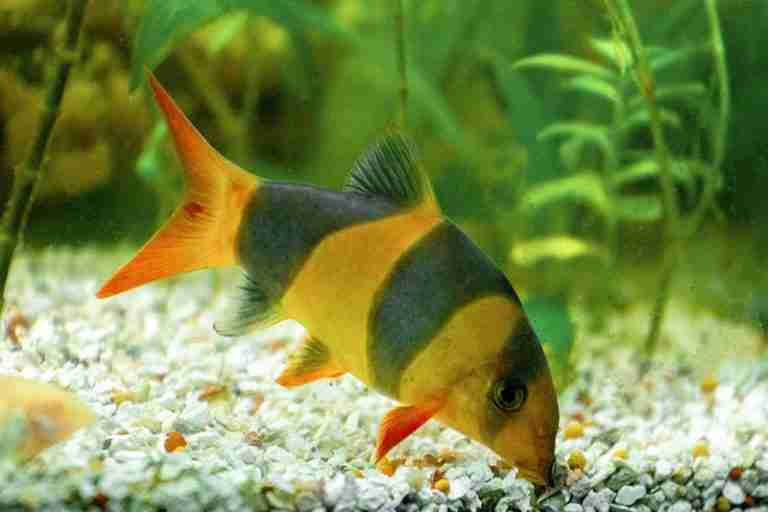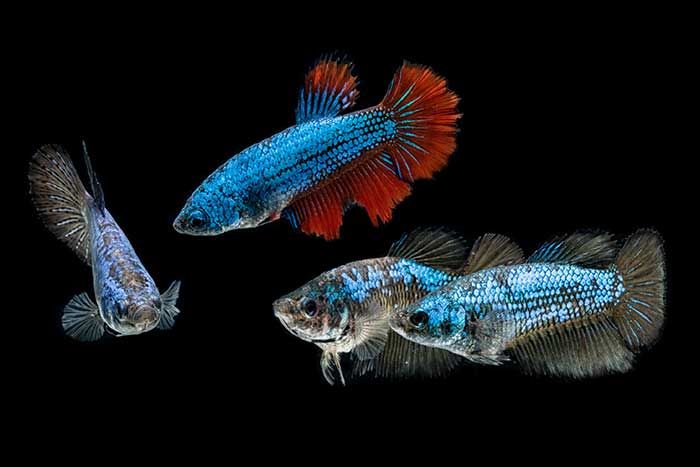How Long Can Fish Live Out Of Water (Amazing Facts)
Did you know that some fish can live out of water? In fact, some fish can survive for quite a while out of the water. But how long can fish live out of water, and how do they manage to do it? Let’s take a closer look.
Most fish can only survive out of water for around 10 minutes. Freshwater fish have a lower capacity to survive out of the water than saltwater fish which often survive up to 30 minutes, mainly because freshwater fish have more fragile gills. Some fish species even have an organ that allows them to breathe out of water.
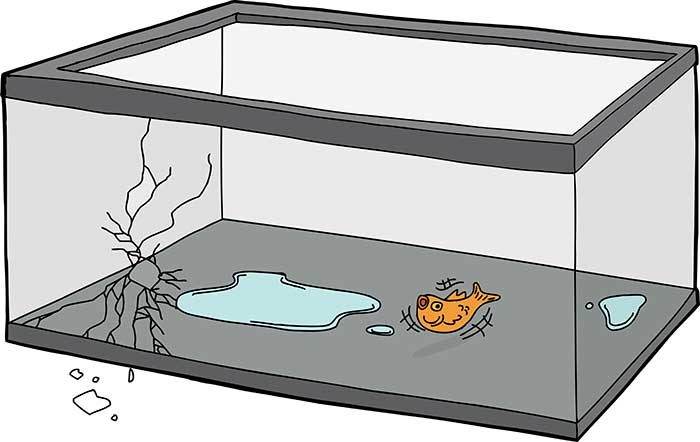
This short article will explain the factors that cause fish to die when removed from the water and shed some light on why some fish can survive out of water for extended periods.
Why Does A Fish Die When Removed From Water?
Fish breathe oxygen like humans and other animals. Oxygen is one of the necessary factors that contribute to sustaining life. Clean, healthy water contains oxygen called dissolved oxygen because it dissolves into the water from the atmosphere above.
If you remove a fish from the water, it no longer has access to the source of oxygen it requires and will eventually die. This is true in most cases, however, there are some exceptions which I will get to soon.
How Do Fish Breathe Underwater?
Fish extract oxygen from water using their gills. As water passes over a fish’s gills, dissolved oxygen is extracted, and the remaining water passes through. Fish only need a fraction of the oxygen content that we humans need.
Oxygen enters the water at the surface, so you often see fish gasping at the top of a tank when there is a lack of oxygen elsewhere.
When fish gasp at the surface, It appears that they are trying to breathe from the atmosphere, which they obviously can’t do, but they are taking what little oxygen they can find as it enters and dissolves into the water.
There are several ways to increase the amount of oxygen in a fish tank, and most of these are based on causing surface agitation. Any splashing at the surface will increase the amount of oxygen entering the water.
Some ways of increasing oxygen in a fish tank are:
- Using a filter that creates a lot of surface water movement.
- Splashing at the surface using your hand.
- Using a bubbler will release air bubbles that rise to the surface and pop, where the oxygen will immediately dissolve into the water.
Aquarium fish require a clean tank as dirty water will reduce its oxygen holding capacity reducing fish survival rate. You should periodically test the oxygen levels in your fish tank or watch to see if your fish are spending too much time at the surface.
If you are interested in fish tank oxygenation, you can read the articles below:
Do Goldfish Need An Air Pump To Help Them Breathe.
How Do You Oxygenate A Fish Tank.
Can A Fish Drown?
In the sense that most people understand, drowning is the inability to breathe in water. Drowning occurs when water enters the lungs, and the oxygen in the lungs is replaced by water.
So can a fish drown? Yes and no! A fish can suffocate when out of the water, which is the same experience as a person drowning in the water, and if you remove all oxygen from the water, technically, the fish will drown.
Can Fish Live In Water Without Oxygen?
Fish survive on only a tiny amount of oxygen to fill their tiny blood vessels, but the fish will die if the water has no oxygen. Fish gills are excellent at extracting the smallest amount of oxygen from water, but if there is none, your fish will drown.
Some fish have adapted to live in very low-oxygen environments. They have developed an organ much like a lung to breathe atmospheric oxygen from the air outside of the water. This ability is unique, and only a few fish can do this, which I will discuss below.
Fish That Can Breathe Air
The ability of fish to extract oxygen directly from the air is often necessary because of the natural habitat that fish species have become used to and usually exposed habitats.
Fish that can breathe and live out of the water often live in environments where the water can quickly disappear. Some fish can survive until the water returns, and some fish will move on land to find more water. These fish are better known as amphibious fish.
Amphibious fish are fish that can leave water for extended periods. Often evolving this way to survive while finding other water sources or a new habitat. When different fish species evolve amphibious traits, this is called convergent evolution.
Some examples of amphibious traits which allow fish to move on land are:
- Lateral Undulation – Snake-like movements such as in eels.
- Tripod Like Walking – Using paired fins and tail to move across land.
- Jumping – Fish can use their muscles to propel themselves into the air and move short distances.
Many ancient fish had lung-like organs, and some still do. However, most of these organs evolved into swim bladders which fill with air to control buoyancy.
Amphibious fish generally come in two types, lung breathers and gill or skin breathers.
Before I get into each of these fish types, take a look at the Youtube video below that I found.
Lung Breathing Fish
Lungfish
Lungfish are freshwater fish that have limb-like fins. They can breathe oxygen from the water or air.
Unlike other air-breathing fish, the lungfish has a highly specialized respiratory system where the lungs are connected to the larynx and pharynx without a trachea. Other fish breathe air using modified, vascularized gas bladders.
There are only six known species of lungfish still in existence, and all but one species can survive for up to two years by burying in the mud when the body of water they live in dries up. Burying in the mud will protect their skin from drying out in the air.
Bichir
The 12 species of this fish are the only ray-finned fish known to retain lungs. Sometimes referred to by pet stores as dragon bichir, all species occur in freshwater habitats in tropical Africa and the Nile River system, mainly shallow floodplains, swamps, and estuaries.
These creatures possess both gills and lungs. The lungs are accessed by a pair of slit-like spiracles on top of the head, which gives them access to breathing air when the water is poorly oxygenated.
Gill Or Skin Breathing Fish
Air Breathing Catfish
An example of an air-breathing catfish is the eel catfish which will sometimes venture on to land in wet weather to hunt beetles.
The walking catfish is another species of catfish that, by its very name, will tell you that it will walk on land. Walking catfish don’t walk with legs but use their fins to keep them upright while snaking and wriggling across the land. They have a thick slime on their body to protect their skin from drying out and help their gills stay moist when out of the water.
Walking Catfish breathe out of the water using a specialized organ known as a labyrinth organ that acts similar to a person’s lung. This catfish will use gills and breathe like any other fish when in the water.
Rockskipper Fish
Rockskipper fish are Blennies. These fish are known for hopping about on land. There are many varieties of Rockskippers, both freshwater and saltwater, such as the Hawaiian Blenny, Rippled Rockskipper, Coral Blenny, Red-spotted Rockskipper, etc.
Most Rockskippers are found in the Indian and Pacific Oceans. They generally come on to land to hunt or to escape predators. When on land, they will use their tails to propel themselves.
Rockskippers are known to be able to stay out of water for several hours at a time but need to be kept moist, or they will dry out and die.
Mudskippers
Although Mudskippers are fish, they spend most of their lives on land. They can breathe in and out of the water and are unusual because they can absorb oxygen through their skin, allowing it to enter the fish’s bloodstream when in moist, muddy conditions or shallow swampy water. This is possible because the blood vessels are very close to the surface, where they absorb oxygen.
Mangrove Killifish
These fish live in brackish and marine waters of the mangrove forests of Florida and can also survive on land for around two months, where they can breathe through their skin like the Mudskipper.
The Mangrove Killifish moves on land by tail flipping and is often quite aggressive but will relax when it rests inside tree hollows and burrows created by insects.
Snakehead Fish
As the name suggests, these snake-like freshwater fish are found around the swampy waters of Florida.
They are known to live out of water for long periods, often 3-4 days, while they are looking for a new body of water to live in.
Snakeheads have a pair of long barbels on their chin which they use to smell prey and will eat anything they can fit in their mouth, including other fish, amphibians, reptiles, mammals, and birds.
These fish survive by breathing air using a primitive lung-like organ located towards the back of their head.
Betta Fish (Betta Splendens)
These freshwater fish are common pet fish found in home aquariums. The natural habitat of betta fish is the shallow pools and rice paddies of Thailand.
They are known to be able to live out of water for a few days as long as their skin stays moist. The shallow bodies of water in which they live will often dry up, leaving them to hop about on land looking for a new source of water.
These pet fish jump out of their tanks and will happily sleep on a leaf sitting out of the water, and many owners will buy a betta hammock which is often set up near the top of the tank just above the waterline.
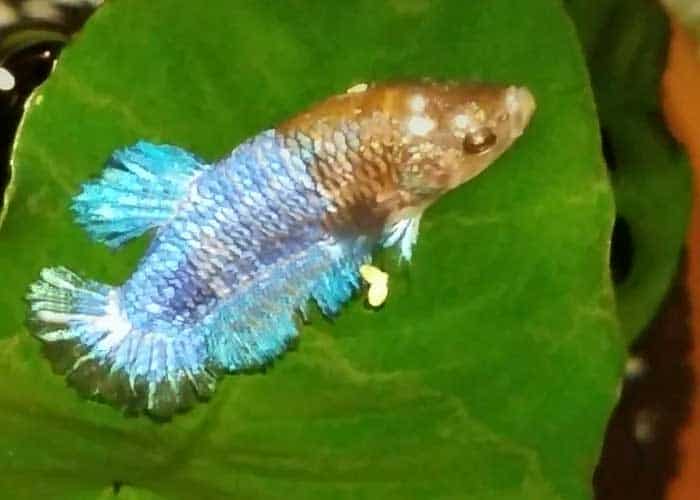
Bettas have a labyrinth organ that helps these fish survive out of the water by breathing air directly from the surface.
Wrap Up
This article has talked only about a small number of fish that can live and breathe out of water. Although many other fish species exist, most fish cannot survive out of water for long periods.
As with many questions, “How long can fish live out of water” isn’t easy to give a straight answer as it depends very much on the species.
Hopefully, you have learned something new. It certainly brings attention to the saying “like a fish out of water.”


